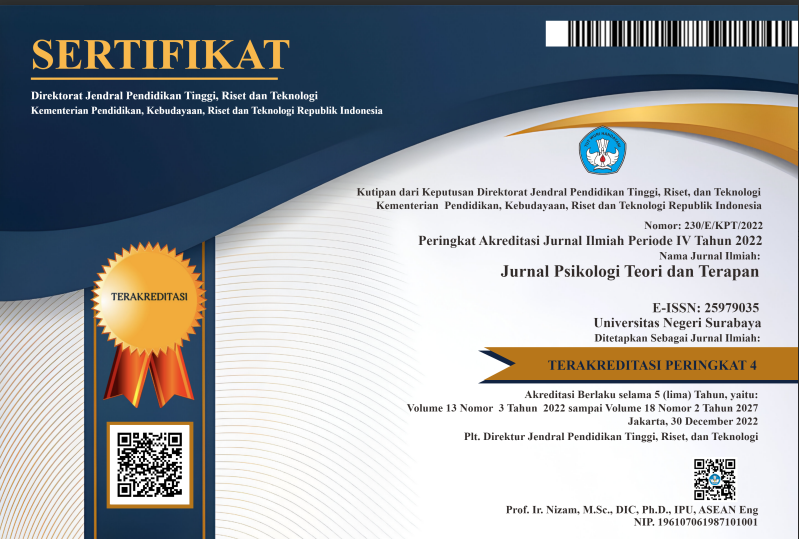Kesepian pada Mahasiswa selama Pandemi COVID-19 di Indonesia
DOI:
https://doi.org/10.26740/jptt.v11n3.p267-277Keywords:
Kesepian, mahasiswa, pandemi, COVID-19Abstract
The present study aims to explore loneliness of college student during COVID-19 pandemic in Indonesia. A total of 236 respondents were participated in the study. Data collection was performed using UCLA Loneliness Scale version 3. Data were analyzed by using descriptive analysis, independent sampel t-test and ANOVA. The study found that more than half of the number of respondents were mild lonely (66.95%), while the others were moderate lonely (19.91%), and the rest were not lonely (13.13%). The finding also showed that there is no significant difference in loneliness between men and women, as well as between respondents living in parents' houses, and boarding or rented houses. Based on this study, it can be concluded that most participants experience loneliness in the mild level.
Keywords: Loneliness, students, COVID-19 pandemic
Abstrak: Penelitian ini bertujuan untuk mendapatkan data empiris untuk mengetahui kesepian pada mahasiswa di masa pandemi COVID-19. Sampel penelitian yaitu 236 mahasiswa. Pengumpulan data dilakukan dengan menggunakan UCLA Loneliness Scale 3. Teknik analisis data yang digunakan yaitu analisis deskriptif dan uji beda dengan t-test dan ANOVA. Temuan dari penelitian ini yaitu sebesar 66,95% responden menunjukkan kesepian ringan, 19,91% responden menunjukkan kesepian sedang, dan 13,13% responden menunjukkan tidak kesepian. Penelitian juga menunjukkan bahwa tidak ditemukan perbedaan kesepian yang signifikan antara laki-laki dan perempuan, maupun berdasarkan status tempat tinggal (rumah orang tua, indekos ataupun rumah kontrak). Berdasarkan penelitian ini dapat disimpulkan bahwa sebagian besar mahasiswa mengalami kesepian pada tingkat ringan.
References
Downloads
Published
How to Cite
Issue
Section
License
Authors who publish with this journal agree to the following terms:
- The author transfers copyright to the journal by signing a copyright transfer agreement.
- The author retains patent and trademark rights, and rights to any process, procedure, or article of manufacture described in the article.
- The use of the articles by authors and end-users is governed by the CC BY-NC license (Creative Commons Attribution-NonCommercial 4.0 International License).
 Abstract views: 5438
,
Abstract views: 5438
, PDF Downloads: 4285
PDF Downloads: 4285












